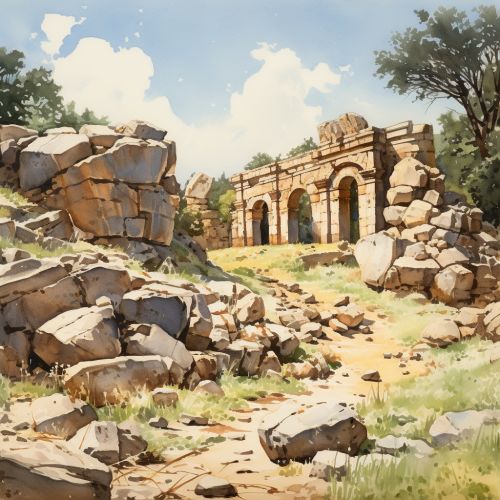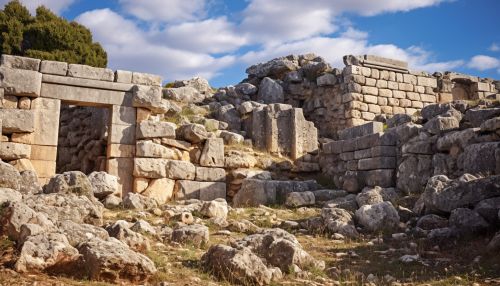Mycenaean civilization
Origins and Historical Overview
The Minoan civilization, which flourished on the island of Crete, is often considered the precursor to the Mycenaean civilization. Around 1600 BC, the Mycenaeans, an Indo-European people, began to settle in the Peloponnese, eventually absorbing the Minoans and establishing their own distinct culture.


The Mycenaean civilization reached its peak between 1400 and 1200 BC, during the Late Bronze Age. This period, often referred to as the Mycenaean Age, is named after the city of Mycenae, one of the major centers of Mycenaean culture. Other important Mycenaean cities included Tiryns, Pylos, and Thebes.
Society and Culture
Mycenaean society was heavily influenced by the Minoan civilization, particularly in terms of its art and architecture. However, the Mycenaeans also developed their own unique cultural practices and institutions. The society was organized into a hierarchy, with a king, known as a wanax, at the top, followed by a military aristocracy, and then the general populace.
The Mycenaeans were known for their monumental architecture, including palaces, fortifications, and tombs. These structures were often decorated with frescoes depicting scenes from mythology, warfare, and daily life. The Lion Gate at Mycenae, a massive stone gateway adorned with a relief of two lions, is one of the most famous examples of Mycenaean architecture.


Economy
The economy of the Mycenaean civilization was based on agriculture, with grains, olives, and grapes being the primary crops. The Mycenaeans also engaged in trade, both within the Aegean and with other Mediterranean cultures. They were known for their production of pottery, textiles, and metalwork, particularly bronze weapons and tools.
Writing and Language
The Mycenaeans used a script known as Linear B, which is the earliest form of Greek that has been deciphered. Linear B was used primarily for administrative and economic records, providing valuable insights into the organization and economy of Mycenaean society.
Decline and Fall
The Mycenaean civilization began to decline around 1200 BC, during a period known as the Bronze Age Collapse. The reasons for this decline are still debated, but likely include a combination of internal strife, natural disasters, and invasions by outside groups. By 1100 BC, most Mycenaean palaces and cities had been abandoned or destroyed.
Legacy
Despite its relatively short lifespan, the Mycenaean civilization had a profound impact on later Greek culture. The myths and legends of the Mycenaeans, including the stories of the Trojan War and the heroes Achilles and Odysseus, were passed down through the ages and became a central part of Greek literature and mythology.
